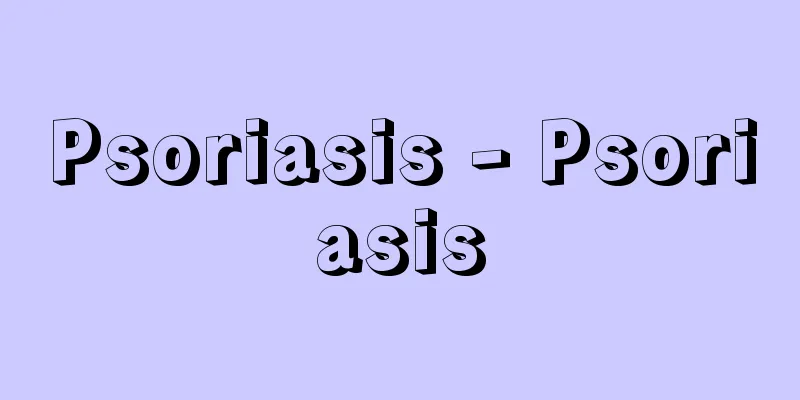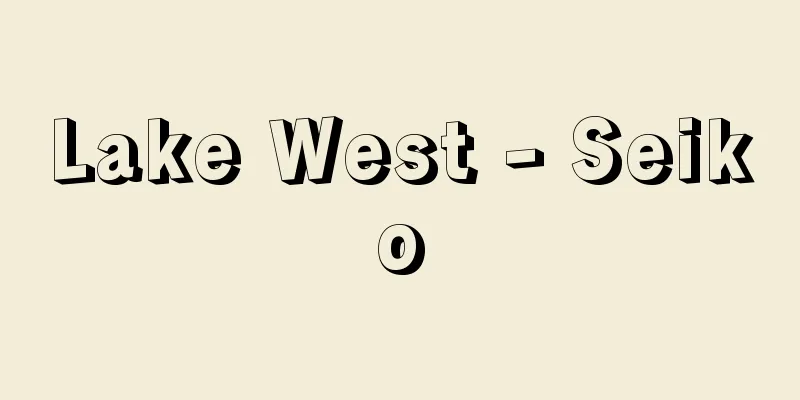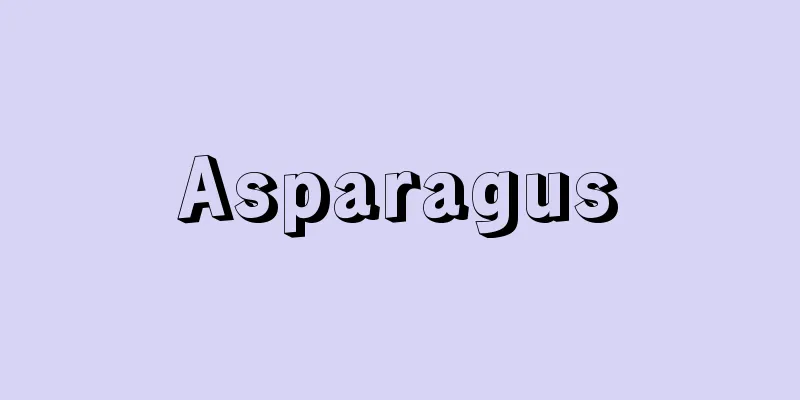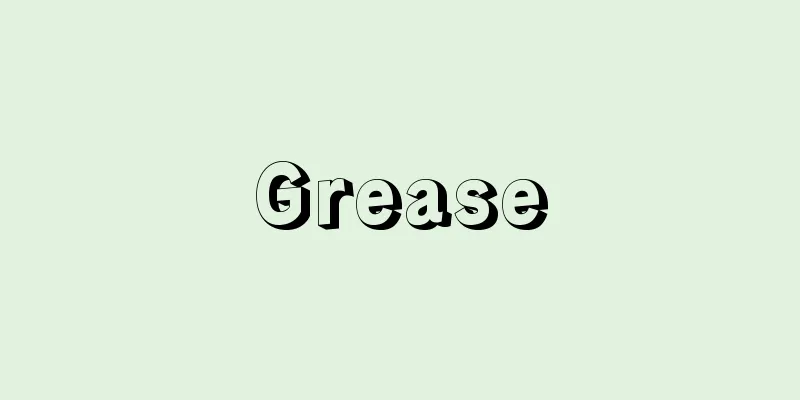Psoriasis - Psoriasis

|
[What kind of disease is it?] Psoriasis is a chronic, non-contagious skin disease that was described in medical texts as early as the Greek period and is characterized by the appearance of red, scaly, flaky patches or flat bumps. Psoriasis occurs when epidermal skin cells grow and migrate to the surface of the skin very quickly - 7 to 10 times faster than normal skin cells, resulting in the formation of scaly patches. Various studies have suggested that the cause may be abnormalities in the proliferation of skin cells, abnormal metabolism, and more recently, abnormalities in the skin's immune function, but no conclusion has been reached as to which is the main factor. Since many Caucasians in Europe and America have the same family history of psoriasis, it is believed to be a dominant genetic disorder, and research into the genes that cause psoriasis has begun. The incidence of psoriasis is estimated to be less than 0.1% among Japanese people, less than one-tenth of that among Westerners, but the number of patients seems to be gradually increasing. [Symptoms] Symptoms most commonly appear on the elbows, knees, lower back, and other areas prone to friction, as well as the head. It is characterized by red, flat, flaky, round or oval bumps (plaque psoriasis). About half of patients experience itching. In terms of age, people most often first notice the condition in their teens and 20s, but symptoms can rarely appear in infants and the elderly. Non-cutaneous symptoms include changes in the nails, with approximately 30% of psoriasis patients having small pits and deformations in the nails. Another characteristic of this disease is that it is prone to cause symptoms such as joint pain and swelling, which are similar to those of rheumatoid arthritis (psoriatic arthritis). In addition to plaque psoriasis, there is erythroderma, a severe form of skin symptom (where the skin over the entire body becomes red and flaky), and pustular psoriasis, which is accompanied by chills, fever, and pustules on the skin (designated as a disease by the Ministry of Health, Labor and Welfare). Both are severe forms of psoriasis that require hospitalization for treatment. [Testing and diagnosis] A dermatologist can accurately diagnose it based on skin symptoms alone. It is difficult to distinguish it from parapsoriasis and pityriasis rubra pilaris, so a histopathological examination may be required. There is no connection between psoriasis and internal organ diseases, but sometimes psoriasis can be caused or worsened by side effects of medication. [Treatment] There are many different approaches, including topical or oral medications or a combination of both, as well as physical therapies such as phototherapy and heat therapy. Since the cause is still unclear, there is no single best treatment. Treatment options are selected based on the individual patient and the severity of symptoms. Be sure to consult with a dermatologist. Even topical treatments can have side effects if continued for a long period of time. Be sure to check with your doctor not only about the effectiveness of the treatment but also about any side effects, and continue with the correct treatment. [Precautions in daily life] Because the condition is often visible to others and is chronic, many patients bear a heavy mental burden in addition to the skin symptoms. Mental stress is also a factor that worsens skin symptoms, so mental worries and skin symptoms tend to form a vicious cycle. It is important to change your mood by sunbathing or exercising outdoors. Sunlight is also effective for skin symptoms. Colds, tonsillitis, and injuries are also factors that aggravate psoriasis. In addition, you should avoid smoking, alcohol, and obesity. If left untreated, psoriasis will gradually spread, but it may shrink naturally. In some cases, it may even disappear completely. It is important not to lose hope and to live with your psoriasis. Sharing feelings and information with fellow people who have psoriasis can also help you move forward in your treatment. Currently, psoriasis patient organizations have been established in 28 countries around the world, and the "Psoriasis Association" (Column "Psoriasis Association") is active in Japan. In the United States, there is also an Internet service. Source: Shogakukan Home Medical Library Information |
|
[どんな病気か] 乾癬は慢性で非感染性の皮膚疾患です。ギリシア時代の医学書に、すでにこの病気のことが記載されています。赤く、うろこ状にカサカサした斑点(はんてん)、あるいは平らな盛り上がりができるのを特徴としています。 乾癬は、皮膚の表皮細胞がたいへん速く増殖・成長し、皮膚の表面に移動していくためにできます。その速さは正常な皮膚細胞の7~10倍にもなり、その結果、うろこ状のカサカサ(鱗屑(りんせつ))が形成されるのです。 原因については、これまでのさまざまな研究で、皮膚細胞の増殖(ぞうしょく)異常、代謝(たいしゃ)異常、最近では皮膚免疫機能(ひふめんえききのう)の異常だと予測されていますが、どれが主要因なのかは結論が出ていません。欧米の白人では、家族内に同じ乾癬をもつ人が多いことから、優性遺伝(ゆうせいいでん)すると考えられ、乾癬をひきおこす遺伝子の検索も始まっています。 乾癬のおこる頻度は、日本人で0.1%以下と推定され、欧米人の10分の1以下ですが、患者数は少しずつ増加しているようです。 [症状] 症状がもっともよく出るのは肘(ひじ)、膝(ひざ)、腰など摩擦(まさつ)の加わりやすい場所と頭です。赤く平らに盛り上がるカサカサした円形や楕円形(だえんけい)のできものを特徴とします(尋常性乾癬(じんじょうせいかんせん))。約半分くらいの患者さんにかゆみがあります。 年齢的には、10~20歳代のころに初めて気づくことがもっとも多く、まれに乳児や高齢者でも症状が現われることがあります。 皮膚以外の症状としては爪(つめ)の変化があり、30%くらいの乾癬患者さんに爪の点状のくぼみ、変形がみられます。 関節の痛み、腫(は)れなどの症状がおこりやすいのも特徴の1つで、その症状はリウマチに似ています(乾癬性関節炎(かんせんせいかんせつえん))。 尋常性乾癬のほかに、皮膚症状が重症になる紅皮症(こうひしょう)(全身の皮膚が赤くカサカサ状態になる)、悪寒(おかん)・発熱、皮膚に膿疱(のうほう)をともなう膿疱性乾癬(のうほうせいかんせん)(厚労省特定疾患(とくていしっかん))があります。いずれも入院治療が必要となる重症の乾癬です。 [検査と診断] 皮膚科の専門医であれば皮膚症状だけで正確に診断します。類乾癬(るいかんせん)、毛孔性紅色粃糠疹(もうこうせいこうしょくひこうしん)との区別がむずかしく、病理組織検査が行なわれることもあります。 乾癬と内臓疾患との関連はありませんが、ときに薬の副作用で乾癬ができたり、悪化することがあります。 [治療] さまざまな方法があります。薬剤を外用するもの、内服するもの、あるいは両者を組み合わせたもののほかに、光線療法や温熱療法などの理学療法も有効です。 原因がまだはっきりしませんから、唯一で最高の治療法はありません。個々の患者さんによって、また、症状の程度によって、治療法は選択されます。必ず皮膚科専門医に相談しましょう。 外用治療でも、長期間続けると副作用が出てきます。効果だけではなく、副作用のことも医師に確認し、正しい治療を続けましょう。 [日常生活の注意] 他人の目にふれることが多く、慢性でもあることから、多くの患者さんは皮膚症状と合わせて、大きな精神的負担を抱えています。精神的ストレスも皮膚症状を悪化させる要因ですから、精神的な悩みと皮膚の症状が悪循環をくり返しがちです。日光浴、戸外の運動などの気分転換が大事です。また、日光は皮膚症状にも有効です。 かぜ、扁桃炎(へんとうえん)、けがも乾癬の悪化因子です。そのほかにも、喫煙、アルコール、肥満は避けましょう。 乾癬は放っておくと徐々に広がっていきますが、自然に小さくなることもあります。なかには完全に消えてしまう人もいます。希望を失わず、自分の乾癬とうまく付き合っていく気持ちがたいせつです。 乾癬にかかっている仲間の人々と気持ちや情報を交換することも、治療生活をよい方向に導きます。 現在、世界28か国に乾癬患者組織が設立されており、日本でも「乾癬の会」(コラム「乾癬の会」)が活動しています。米国ではインターネットサービスもあります。 出典 小学館家庭医学館について 情報 |
<<: Infection - Infection (English)
Recommend
Pym - John Pym
British politician. The most powerful opponent of...
Press (English)
A general term for machines used in press processi...
Phosphorus pentachloride (Pentachloride)
Chemical formula: PCl 5. It is obtained by directl...
Fishing conditions - Gyokyo (English spelling) Fluctuations of catch
Changes in catch volume over time. A large catch i...
Pertamina [company] (English spelling)
Indonesia's national oil and gas company, enga...
Temporary diamond fence - Karihigaki
…However, taking advantage of the loss of the pri...
CAP - Company A
Columbia AppleTalk Package. AppleTalk protocol sta...
Yame [city] - Stop
A city in the southern part of Fukuoka Prefecture....
Large blue-and-white jewel beetle - Large blue-and-white jewel beetle
... There are about 6,000 species of Buprestidae ...
Acheulian culture - Acheul
An Early Paleolithic culture that spread mainly a...
Buddha's Footprint - Bussokuseki
A stone engraved with the footprints of Shakyamun...
Zhou Wen-mo (English spelling)
[Born] Qianlong 17 (1752). Jiangsu, Kunshan [Died]...
Mesmer
Austrian physician. He studied medicine at the Uni...
Aquatic worm - Aquatic worm
A marine animal belonging to the family Polychaet...
Kitago [town] - Kitago
A former town in Minaminaka District, southern Miy...









